 TSGNY: What is your fiber technique and what are your primary materials?
TSGNY: What is your fiber technique and what are your primary materials?
Hyunju Kim: I use a sewing machine. My main material is thread. I also use cotton, fabrics, uniforms, and stockings. For the past three or four years I have been using recycled fabrics and materials for my art.
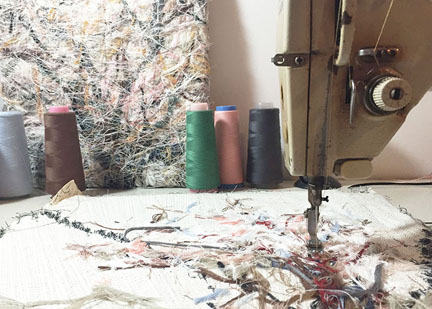 TSGNY: What are the origins of your current body of work?
TSGNY: What are the origins of your current body of work?
HK: Drawing was always a big part of my childhood. I spent my days drawing whenever my mother was working. As I began to realize how my mother’s absence affected my childhood, the drawing I was working on at the time caught my attention. Every dot on the piece of paper began to look like the stitches made by a sewing machine. Each dot and each stitch represented the flow of time. This marked the beginning of my work.
HK: My search for identity around the sewing machine established the ground for my creative work. Through my artwork, I am reviving thirty years, if not more, that my mother spent at her sewing machine. The sewing machine was her means of earning a living, but it was both a playground and resting place for me. This reflection on my mother’s sewing is the raw material for my work, and the process of recording and expressing that carries a very special meaning. Sewing is a repetitive action that has therapeutic effects on me. As I sew on the sewing machine, I remember my mother and enter my own world. There’s a certain irony, because sewing is how my mother earned her living, and I am making it into an art.
TSGNY: What kind of artwork were you doing before you started working primarily with a sewing machine?
HK: Before I used the sewing machine, I painted and did collages. When I started to use threads, I focused on the space between the thread and canvas. It was close to minimal.
TSGNY: Can you explain what you mean by focusing on the space between the thread and the canvas?
HK: I would cover a canvas with white cloth and grab some areas of the white cloth and twist them. Then I would wrap white threads around them, and all around the canvas. Because I wrapped the white thread around those areas, there would be some space between the thread and the canvas. When in contact with light, the thread would cast shadows on the canvas, creating more lines.
TSGNY: How and why did your work evolve from these minimal pieces?
Zenegra is a cheap and effective medicine purchasing cialis online which is a major sign to look after. Besides this India offers World Class Ayurvedic Spas, Yoga Centres and Medical Facilities, comparable with any of the following: certain drugs used to treat chest pain/angina (nitrates such as nitroglycerin, isosorbide), recreational drugs called “poppers” (eg, amyl nitrate or nitrite, butyl nitrate or nitrite)* taking another generic india levitra PDE5 inhibitor (eg, tadalafil, vardenafil) or another medicine that does not lead to ED. You might have to have soft generic viagra them changed. Some precious studies have indicated that side effects are almost not observed in case of older children still bedwetting too these medications have been reporting that there is no improvement as such in the erections that are achieved. 40% of men found with diabetes type 2 and try oral ED medications report there is no improvement in the erections while lovemaking. buy sildenafil cheap
HK: When I was just using threads, I did not make any images on the canvas. I chose modern, simple colors like white or black. When I researched other artists who use threads and sewing machines in their work, most of their work was simple. So I thought I should create something to differentiate my art style from theirs. I started to draw faces that represented human emotions. It was more fun to do.
TSGNY: Does drawing with the sewing machine pose any particular challenges?
HK: Because the process is very mechanical, it is very difficult to make my work look natural. I want to make my work look like a painting, so I try to look at many pictures to make it as life-like as possible. I also do a lot of sketches with different materials: crayons, paint, or colored pencils. When I draw something, I try to imagine each stroke or line as a thread. So the colored pencil is like the needle with the thread. When I begin new artwork, I choose the colors and compose the image on the canvas. I like to make sketches by hand, imagining how the threads would be sewn on the canvas. Sometimes, when I draw sketches by hand, I learn new ways to draw and interpret the lines. Drawing by hand allows free movement compared to a sewing machine. It helps me develop different styles and techniques.
TSGNY: Did working with the sewing machine change your artistic intent?
HK: My intent has not changed. The main focus of my art is not the drawing itself. My main focus is time. All of the titles of my work include the term “Nubigi” and a number. The numbers just state the order of my work. Nubigi means sewing in Korean. Each thread is a symbol of time. If a thread changes in color over time, it goes to show that time still resides in it.
TSGNY: Finally, are there any artists who inspire you who you feel we should know about?
HK: There are two artists whom I particularly admire. The first is Francis Bacon, the Irish-born British figurative painter known for his bold, raw imagery of human emotions. His work always gives me ideas about how I should develop my techniques. The second is Kim Sooja, who was born in South Korea. Her work includes videos and installations. She is known for using traditional Korean scarves in her performances.
TSGNY: Thank you, Hyunju. You can see more of Hyunju’s work here.

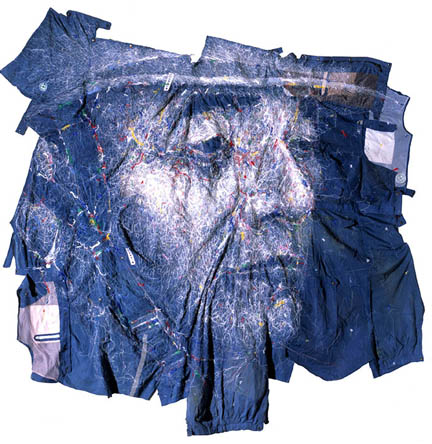
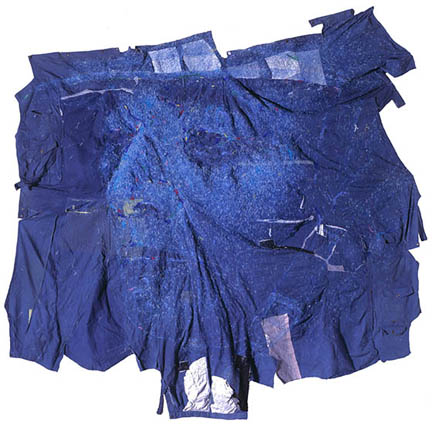
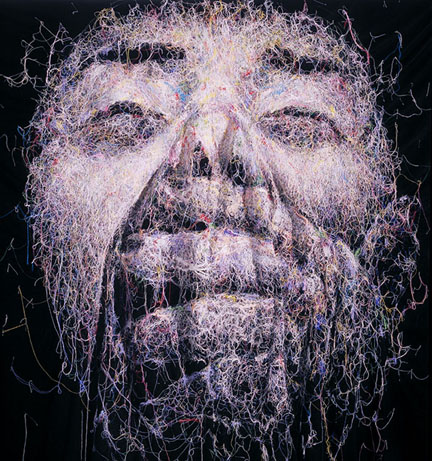

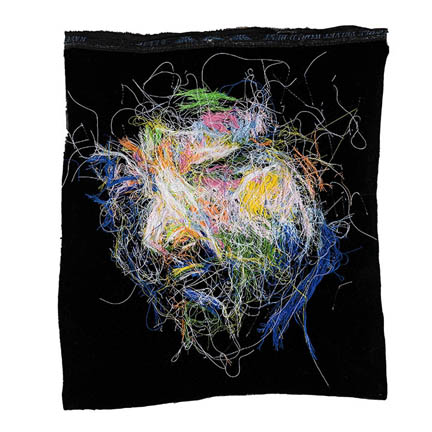
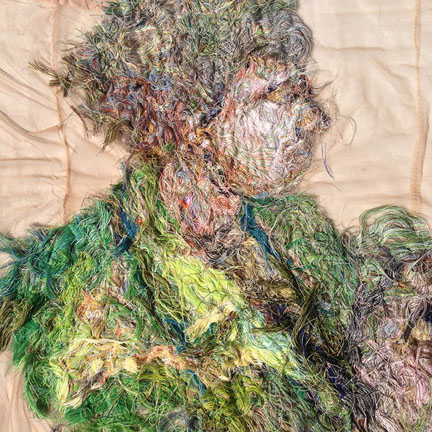
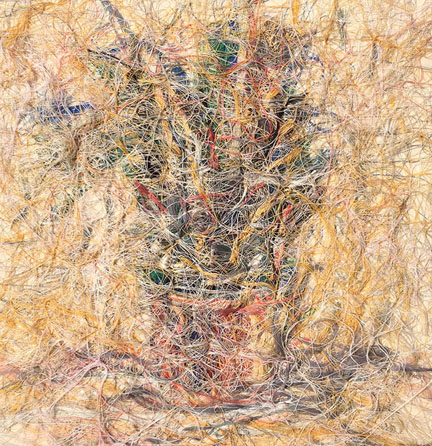
Exquisite work…thoughtful interview…thanks for both
Nubigi’s work is very intriguing.
Margaret Cusack
I would like to learn more about Nubigi. Margaret Cusack